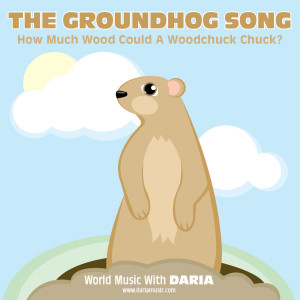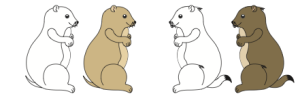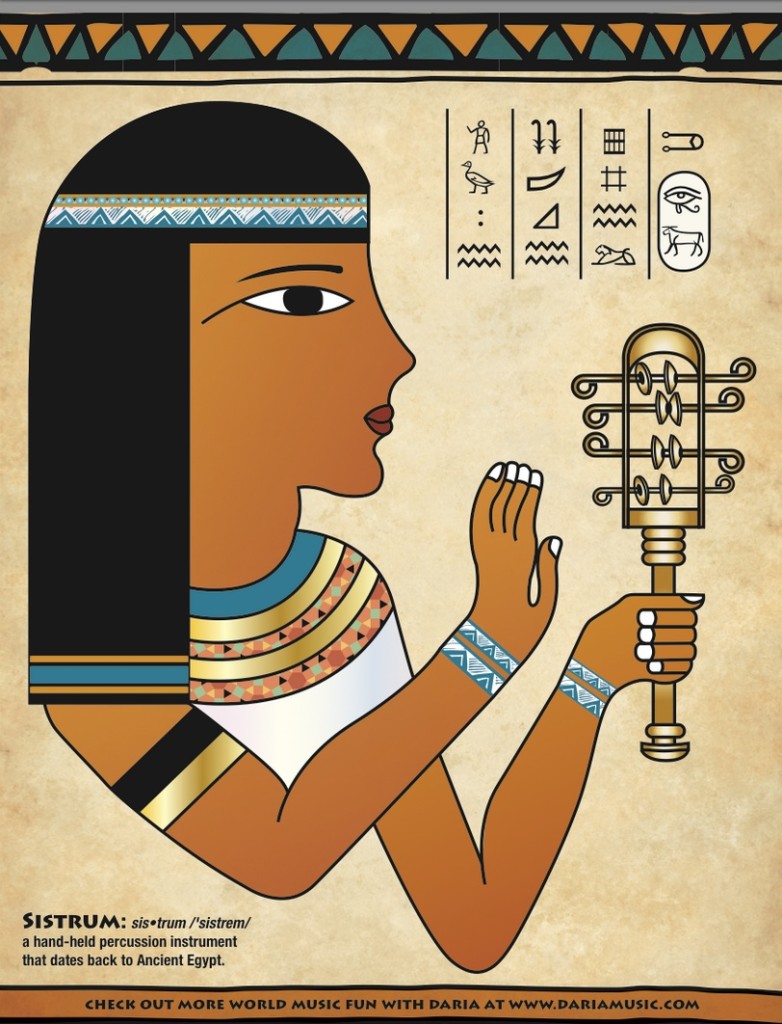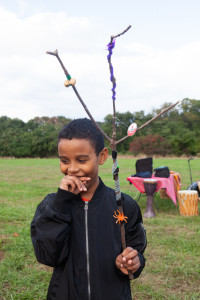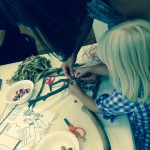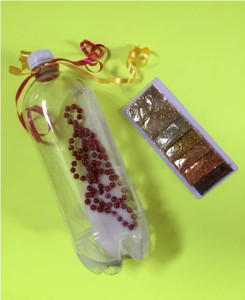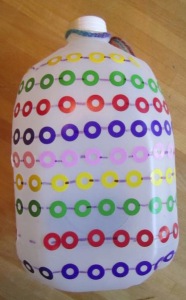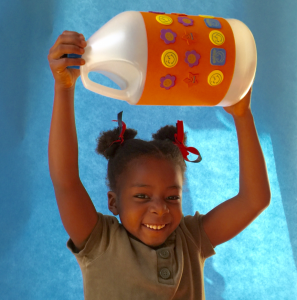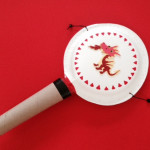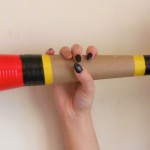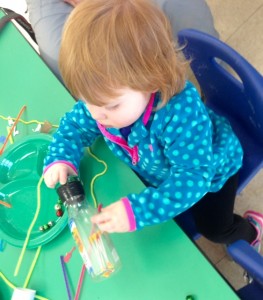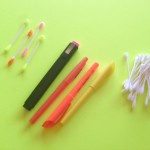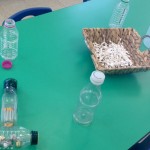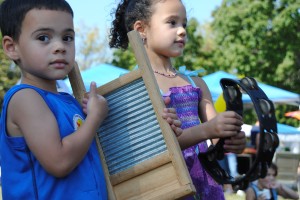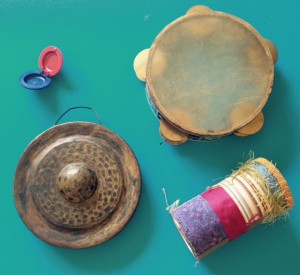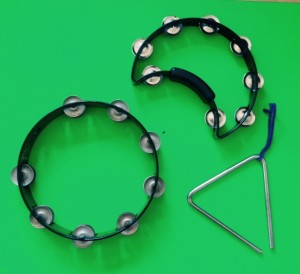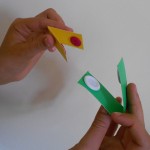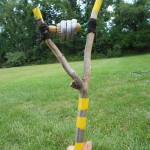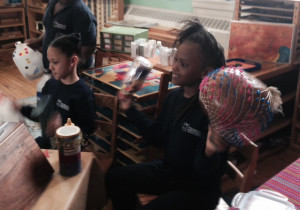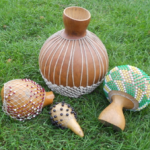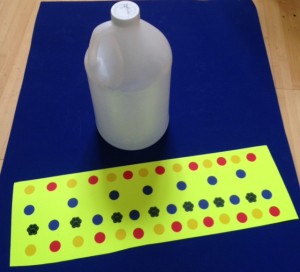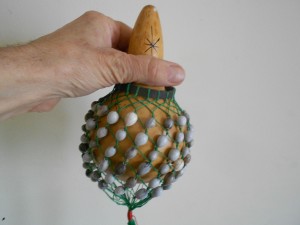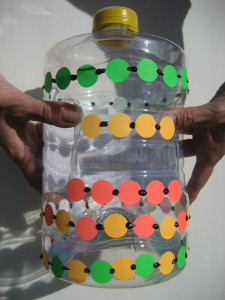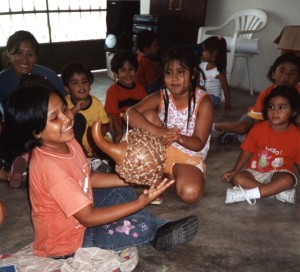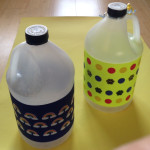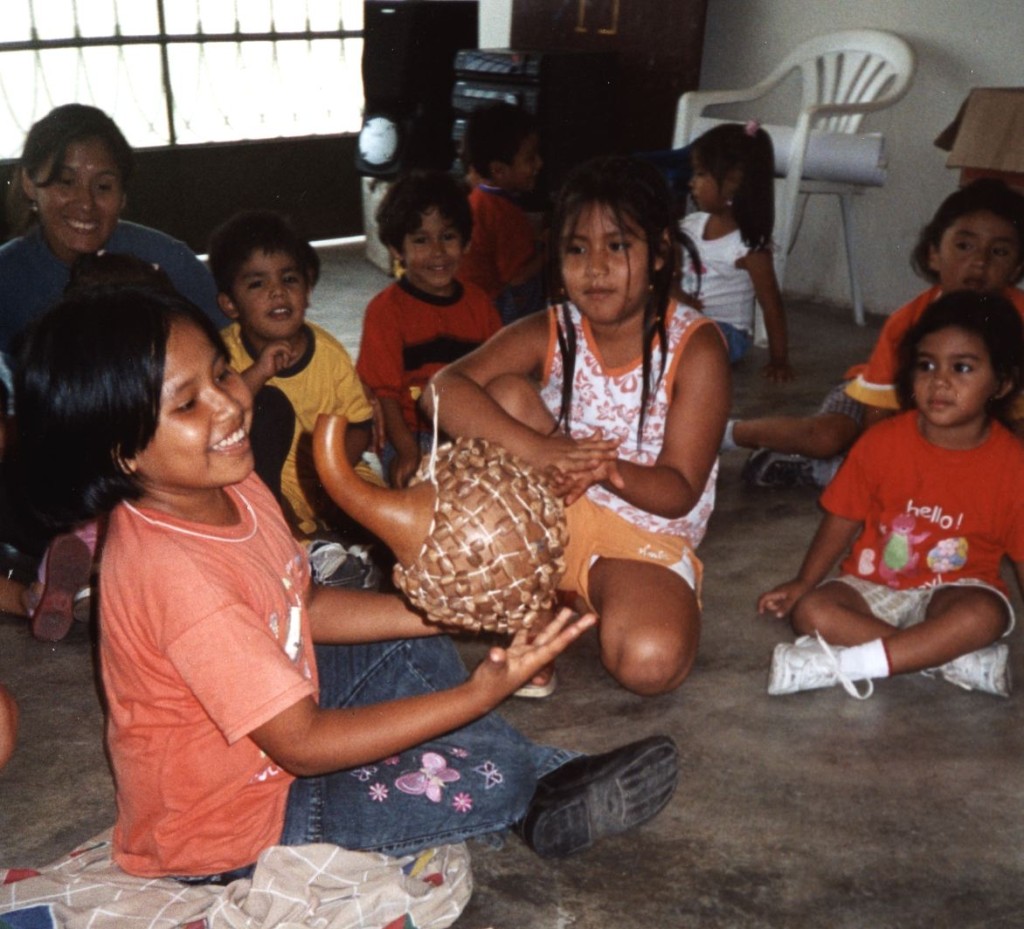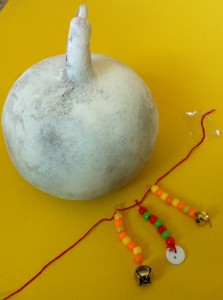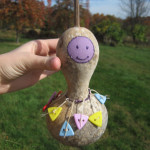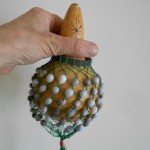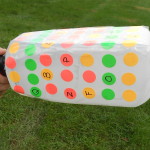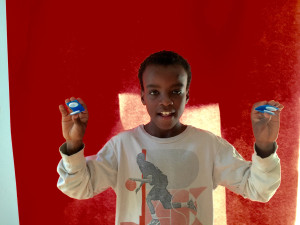 Hispanic Heritage Month (September 15 – October 15th) presents a wonderful opportunity for creative play that introduces the music and musical instruments found in Hispanic cultures around the world. And it’s a great way to teach as well.
Hispanic Heritage Month (September 15 – October 15th) presents a wonderful opportunity for creative play that introduces the music and musical instruments found in Hispanic cultures around the world. And it’s a great way to teach as well.
While discovering world cultures with Hispanic roots, you can learn about rhythms, patterns, counting and language and develop coordination and motor skills. You can also add your own creative or artistic flair to any of the instruments you create.
Here is a really easy craft version of traditional castanets and some great musical play activities to try as well. And don’t forget to check out all the great posts and prizes that are a part of this Hispanic Heritage blog hop. Below!
Click, Click, Castanets!
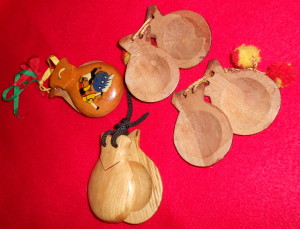 Have you ever watched a flamenco dancer play amazing rhythms with wooden castanets? You can make your own version with buttons plus a bit of heavy poster board. Then you can click and clack and dance away!
Have you ever watched a flamenco dancer play amazing rhythms with wooden castanets? You can make your own version with buttons plus a bit of heavy poster board. Then you can click and clack and dance away!
You can find the craft tutorial free, here: https://www.teacherspayteachers.com/Product/Button-Castenets-Tutorial-3436732
Once you’ve made your colorful castanets, here are some music activities you might like to try:
Try making several pairs with different size or shape buttons.
Make a pair for parent (or teacher) and child and play the same rhythm together.
Try making a rhythm by clicking right hand then left hand, right hand and left hand. Try this slowly and then get faster.
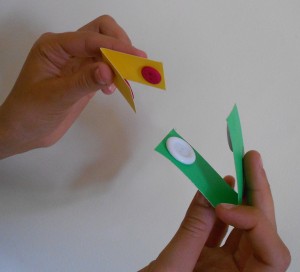 Try making a rhythm by different patterns of right hand and left hand clicks. For instance, Right hand, Right hand. Left!
Try making a rhythm by different patterns of right hand and left hand clicks. For instance, Right hand, Right hand. Left!
Try playing along to music from Spain. Can you find patterns that fit the music?
Try playing along to any of your favorite music. Can you find patterns that fit with what you are hearing?
Try a call and response game. The parent or teacher makes one rhythm and the child must repeat what they hear.
Try a call and response game with eyes closed. Switch places and let the child lead a call and response game.
Enjoy your music and celebration of Hispanic Heritage Month!
 We are so excited for our sixth annual Hispanic Heritage Month series and giveaway! Through the month (September 15 – October 15), you’ll find great resources to share Hispanic Heritage with kids, plus you can enter to win in our great giveaway and link up your own posts on Hispanic Heritage!
We are so excited for our sixth annual Hispanic Heritage Month series and giveaway! Through the month (September 15 – October 15), you’ll find great resources to share Hispanic Heritage with kids, plus you can enter to win in our great giveaway and link up your own posts on Hispanic Heritage!
September 15
Embracing Diversity on Multicultural Kid Blogs: 10 Fun Facts About Dominican Republic
September 18
Spanish Mama: Nazca Lines – Exploratory Art Project
September 19
Hispanic Mama: Fun Ways to Celebrate Hispanic Heritage Month with Your Children
September 20
Inspired by Family: 16 Great Children’s Books About South America
September 21
Spanish Mama: Folk Songs in Spanish
September 25
Spanish Playground: Food from Latin America Infographic Picture Cards Activities
September 26
All Done Monkey: 60+ Hispanic Heritage Month Recipes to Try with Kids
September 27
Discovering the World Through My Son’s Eyes: Hispanic Inspired Crafts for Kids
September 28
Kid World Citizen: 35+ Best Resources and Activities to Celebrate Hispanic Heritage Month
September 29
Pura Vida Moms on Multicultural Kid Blogs: Costa Rican Food – 9 Favorite Recipes
October 2
Discovering the World Through My Son’s Eyes on Multicultural Kid Blogs: 10 Fun Facts About Puerto Rico
October 3
Mama Tortuga: 10 Most Used Medicinal Plants
October 5
Spanglish House: How Do Hispanics Celebrate Hispanic Heritage Month and Why Should You?
October 11
La Clase de Sra DuFault
October 12
Tiny Tapping Toes
Don’t miss all of the great posts from previous years as well: 2012, 2013, 2014, 2015, 2016
Hispanic Heritage Month Giveaway!
Giveaway begins September 15 and goes through October 15, 2017. Enter below for a chance to win one of these amazing prize packages! Some prizes have shipping restrictions. In the event that a winner lives outside the designated shipping area, that prize will then become part of the following prize package. For more information, read our full giveaway rules.

Grand Prize
From Mariana Iranzi: A digital copy of her new CD Primavera
From Cathy Fink & Marcy Marxer: A print copy of Cántale a tu bebé with music download – US Shipping Only
From 123 Andrés: A copy of the CD Arriba Abajo (digital copy if outside the US)
From Spanish Playground: Set of books, crafts, and toys from Latin America - US Shipping Only
From Carole P. Roman: Set of If You Were Me and Lived In… books on Mexico, Brazil, Cuba, Peru, Portugal, and the Mayan Empire – US Shipping Only
From Mister G: A copy of the new CD Mundo Verde/Green World (digital copy if outside the US)
From World Music with Daria: Celebrate Hispanic Heritage Musical Craft and Coloring E-Book
From Gus on the Go: Spanish Alphabet Print (US Shipping Only) & single-use promo code for Spanish for kids language app
From Lectura Para Niños: A set of printable little readers, one for each letter of the Spanish alphabet. Designed to last the entire school year, with one new book each week plus several review weeks included throughout the set

1st Prize
From Mariana Iranzi: A digital copy of her new CD Primavera
From Cathy Fink & Marcy Marxer: A print copy of Cántale a tu bebé with music download – US Shipping Only
From 123 Andrés: A copy of the CD Arriba Abajo (digital copy if outside the US)
From Spanish Playground: Set of books, crafts, and toys from Latin America – US Shipping Only
From Carole P. Roman: Set of If You Were Me and Lived In… books on Mexico, Brazil, Cuba, Peru, Portugal, and the Mayan Empire – US Shipping Only
From Mister G: A copy of the new CD Mundo Verde/Green World (digital copy if outside the US)
From World Music with Daria: Set of maracas and a Spanish fan – US Shipping Only
From Gus on the Go: Spanish Alphabet Print (US Shipping Only) & single-use promo code for Spanish for kids language app

2nd Prize
From Cathy Fink & Marcy Marxer: A print copy of Cántale a tu bebé with music download – US Shipping Only
From 123 Andrés: A copy of the CD Uno, Dos, Tres, Andrés! (digital copy if outside the US)
From Spanish Playground: Set of books, crafts, and toys from Latin America – US Shipping Only
From Carole P. Roman: Set of If You Were Me and Lived In… books on Mexico, Brazil, Cuba, Peru, Portugal, and the Mayan Empire – US Shipping Only
From Mister G: A copy of the new CD Mundo Verde/Green World (digital copy if outside the US)
From Lee and Low Books: Martí’s Song for Freedom/Martí y sus versos por la libertad; Rainbow Weaver/Tejedora del arcoíris; Mamá the Alien/Mamá la extraterreste; Marisol McDonald and the Monster/Marisol McDonald y el monstruo – US Shipping Only

3rd Prize
From Carole P. Roman: Set of If You Were Me and Lived In… books on Mexico, Brazil, Cuba, Peru, Portugal, and the Mayan Empire – US Shipping Only
From Mister G: A copy of the new CD Mundo Verde/Green World (digital copy if outside the US)
From Sarah Aroeste: A copy of the new Ladino/English bilingual picture book Ora de Despertar/Time to Wake Up – US Shipping Only
From Arte Público Press: Picture books Esteban de Luna, Baby Rescuer! / Esteban de Luna, ¡rescatador de bebés!, The Little Doctor / El doctorcito, Dalia’s Wondrous Hair / El cabello maravilloso de Dalia, Grandma’s Chocolate / El chocolate de Abuelita, I Kick the Ball / Pateo el balón, Level Up / Paso de nivel, A Surprise for Teresita / Una sorpresa para Teresita – US Shipping Only

Bonus Prizes
We are giving away an extra copy of the CD Mundo Verde/Green World from Mister G (US Shipping Only) and up to 10 digital downloads of this brand new album: Watch a video of the title track!
a Rafflecopter giveaway
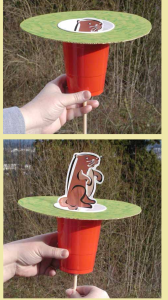 The simple song is based around the tongue-twister “How much wood could a woodchuck chuck… if a woodchuck could chuck wood?” I also wondered how much ground a groundhog could grind and how much sap a sapsucker could suck. And, yes, even though the lyrics are in song form, the tongue twisters still are a challenge to sing or say.
The simple song is based around the tongue-twister “How much wood could a woodchuck chuck… if a woodchuck could chuck wood?” I also wondered how much ground a groundhog could grind and how much sap a sapsucker could suck. And, yes, even though the lyrics are in song form, the tongue twisters still are a challenge to sing or say.
